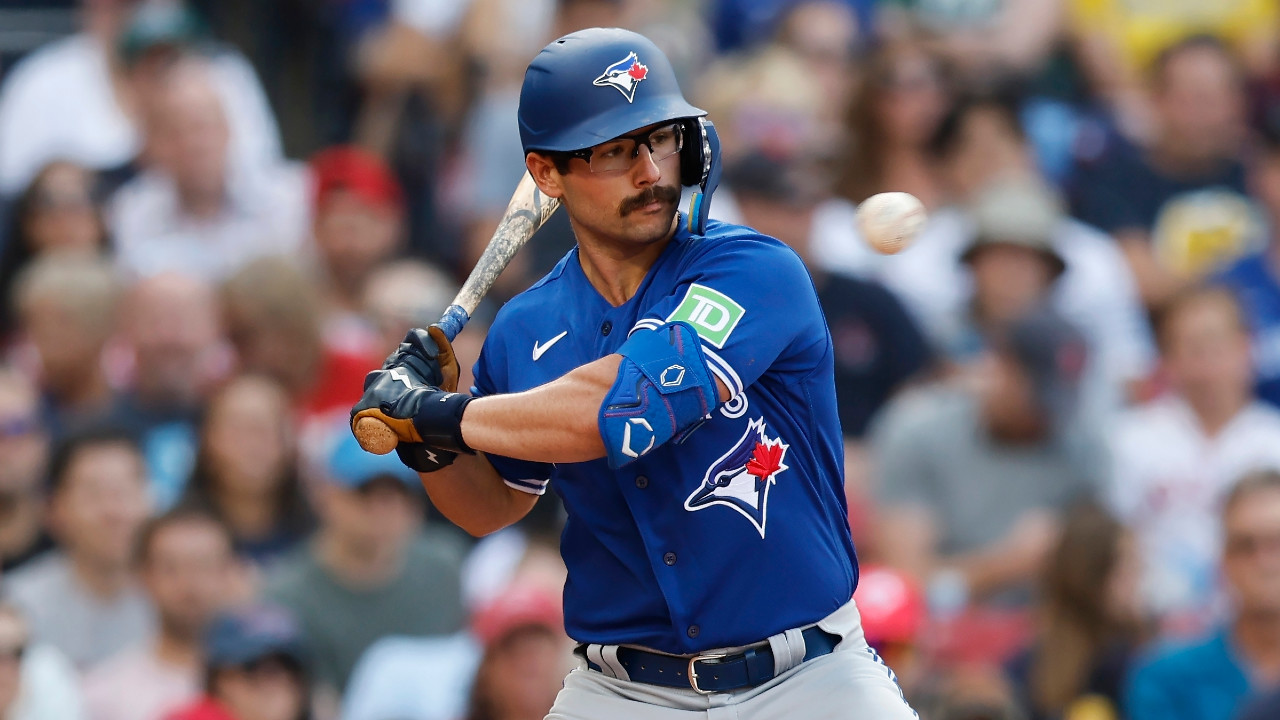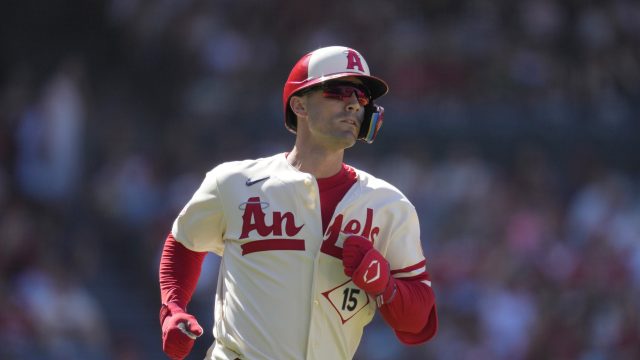
It used to be that when a rookie hitter cracked the major leagues, it would take opposing pitchers some time to figure out their strengths and weaknesses.
In an era where detailed data-backed scouting reports are ubiquitous, the book is already out on batters the first time they take an MLB at-bat.
Davis Schneider is an excellent example of this phenomenon.
The Blue Jays rookie/mustachioed folk hero has played only 14 games in the major leagues and he’s already being pitched in an extreme manner. There’s been no feeling-out period, where pitchers present him with a vanilla plan of attack — instead his perceived weakness at the top of the zone has been ruthlessly targeted.
In his brief MLB career, 30.9 per cent of the pitches Schneider has seen have been in the top part of the zone or above, specifically sections 11, 12, 13, 21, 22, 23, 31, 32, and 33 by Statcast’s attack zones.
Of the 499 hitters who’ve seen at least 200 pitches this season, that number is the seventh-highest.
Unsurprisingly, that means a low percentage of offerings in the lower section of the zone and below. In that same sample, he has the fifth-lowest mark (19.1 per cent).
These numbers shouldn’t come as a surprise, based on Schneider’s own appraisal of his abilities.
“I’ve always struggled with the fastball up,” Schneider told Sportsnet’s Ben Nicholson-Smith. “It’s common knowledge at this point. I mean, even in the minor leagues, pitchers kind of threw me up. But I know that going into an at-bat. So, I’ve just got to learn from it. And if they throw it up, you’ve got to foul it off or just take it because pitchers are bound to make mistakes down, and that’s when I’m going to do my damage.”
He doubled down on that idea during an appearance on The Gibby Show with former Blue Jays manager John Gibbons, interestingly characterizing it as an intrinsic part of his swing.
“Everyone knows I struggle with the high fastball. That’s just the way it is,” Schneider said on the show. “That’s the way my swing works. I’m just a low-ball hitter. Everyone has their holes.”
It’s unusual for a hitter to speak openly about a weakness, particularly in a way that makes it seem like a constant to be worked around rather than a malleable trait to be improved upon.
But if we take the infielder’s word that high fastballs are a hole in his swing, it’s worth examining how he’s mitigated that weakness in the red-hot start to his MLB career. A couple of things stand out based on his early results.
The first is that whatever he thinks he issues with high heaters are, they haven’t gotten in the way of his power production.
His three home runs on fastballs in the upper part of the zone are tied for first on the Blue Jays, despite the fact he’s made just 57 trips to the plate.
This doesn’t look like the swing of a guy who is totally inept at the top of the zone:
Although Schneider has had early success in this part of the zone, he hasn’t produced solely positive indicators. It’s worth noting that all three homers Schneider hit on fastballs up were on pitches slower than 95 mph — and his whiffs have been concentrated at the top of the zone.
When Schneider faces more elite velocity, we’ll get a better sense of the extent of his issues on pitches up. For now, it’s clear that’s where pitchers want to get him out — what we don’t yet know is how successful they’ll be.
Even if high heaters are always going to be an issue for him, going to that pitch over and over against him isn’t as easy as it sounds.
As the infielder himself says, pitchers are bound to make mistakes down from time to time — and when they do, he’ll have fastballs down the middle to deal with. He also has a good enough eye to lay off most pitches out of the zone and the ability to fight off others.
Schneider has either taken or fouled off 74.6 per cent of the pitches he’s seen in the top of the zone and above. Living to fight another day might be his most sustainable strategy for handling those pitches.
If you could reliably throw quality heaters at the very top of the zone every time, you’d probably have a good chance of getting Schneider out consistently. Even professional pitchers simply don’t command the ball like that, though.
We know that Schneider’s production is bound to dip in the weeks to come. Babe Ruth is MLB’s all-time OPS leader at 1.164 and the Blue Jays infielder sits at 1.420. It’s unfair to expect him to be the best hitter baseball has ever seen by a massive margin.
His self-described inability to hit the high fastball will play a role in how far he falls. Based on his early results, he seems to have ways to counter his supposed Achilles heel.









